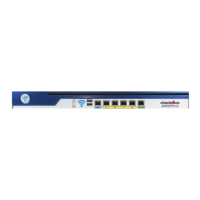28
The third column shows the name or location of the unit from which this unit gets
it’s connection, this may be the CheckBox controller or another repeater if the
units have daisy chained themselves. Mesh repeaters are constantly evaluating
their connections and “talking” to other repeaters and the controller to determine
the best route back to the controller and the internet. You may see this change
occasionally as the system reconfigures itself to deal with changing conditions.
The fourth column shows the IP (network) address of the unit.
The fifth column shows the current signal strength of this unit to it’s upstream
connection. The signal strength is a 5 minute average, and it is normal for this to
fluctuate. Any unit with a low signal strength will be highlighted in Yellow or Red.
Units highlighted in yellow will have slower connections that will be unreliable.
Units in Red are not able to support traffic or users as they have a very low or no
connection (often as the result of issues with power or wiring
at the unit). The signal is only displayed for access points
running in wireless mode (access points without a wired
Ethernet connection to the CheckBox), any wired units will
display "wired" in this column.
The sixth column shows the Link speed, the maximum speed
data can travel over this link. Other factors may cause actual
throughput to be lower.
The seventh column indicates what channel the access point is
operating on. Systems with multiple wired access points can
change the channel of each wired access point by clicking on
the unit name and adjusting the preferred channel accordingly.
The last column shows how many clients are using this
access point.

